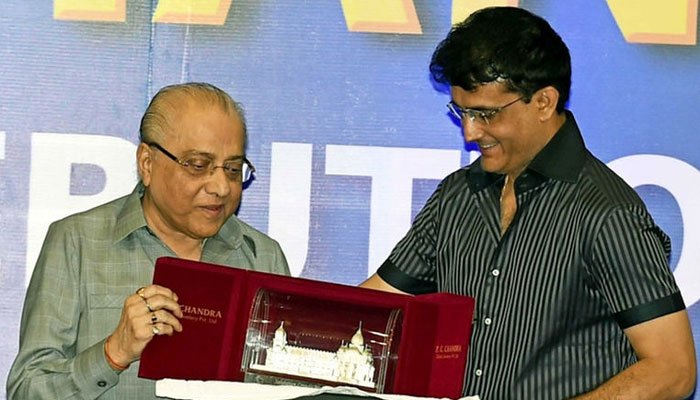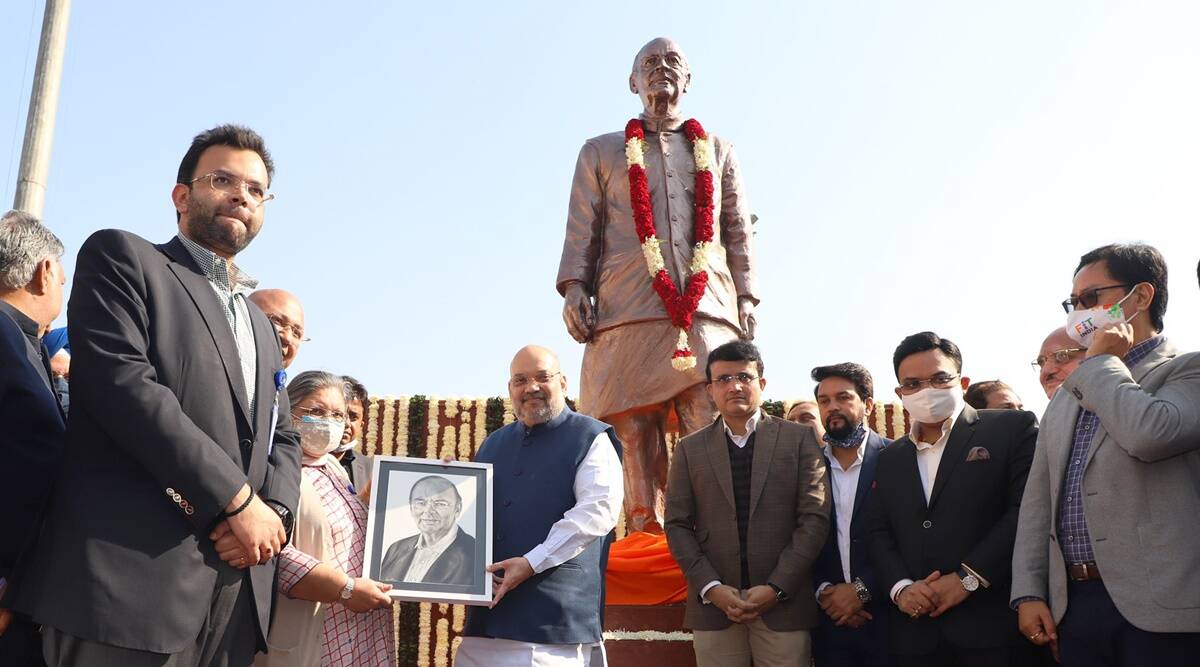
- Home
- News
- Analysis
- States
- Perspective
- Videos
- Education
- Entertainment
- Elections
- World Cup 2023
- Features
- Health
- Business
- Series
- Economy Series
- Earth Day
- Kashmir’s Frozen Turbulence
- India@75
- The legend of Ramjanmabhoomi
- Liberalisation@30
- How to tame a dragon
- Celebrating biodiversity
- Farm Matters
- 50 days of solitude
- Bringing Migrants Home
- Budget 2020
- Jharkhand Votes
- The Federal Investigates
- The Federal Impact
- Vanishing Sand
- Gandhi @ 150
- Andhra Today
- Field report
- Operation Gulmarg
- Pandemic @1 Mn in India
- The Federal Year-End
- The Zero Year
- Premium
- Science
- Brand studio
- Home
- NewsNews
- Analysis
- StatesStates
- PerspectivePerspective
- VideosVideos
- Entertainment
- ElectionsElections
- Sports
- Loading...
Sports - Features
- BusinessBusiness
- Premium
- Loading...
Premium

Can good cricketers bat through the sticky corridors of BCCI?

Bishan Singh Bedi has never believed in pulling punches. Even as an active cricketer, he wasn’t shy of taking on the establishment if he believed the cause was just. That trait hasn’t deserted him in retirement, be it his sustained condemnation of Muttiah Muralitharan’s action despite the off-spinner getting the all-clear from the International Cricket Council or his snipes at...
Bishan Singh Bedi has never believed in pulling punches. Even as an active cricketer, he wasn’t shy of taking on the establishment if he believed the cause was just. That trait hasn’t deserted him in retirement, be it his sustained condemnation of Muttiah Muralitharan’s action despite the off-spinner getting the all-clear from the International Cricket Council or his snipes at the ultra-popular Indian Premier League.
It, therefore, came as no surprise when the former India captain reacted with characteristic outrage to the proposed installation of Arun Jaitley’s statue at the Feroze Shah Kotla in the national capital, now named after the late former union minister who also served as the president of the Delhi and Districts Cricket Association.
In a strongly worded missive to the DDCA, now headed by Jaitley’s son Rohan, Bedi asked that his name be removed from the spectators’ stand named after him in 2017, and renounced his membership of the association. Making it clear that he had had serious misgivings over the senior Jaitley’s style of functioning when he helmed the DDCA, he also wrote, “Sporting arenas need sporting role models. The place of the administrators is in their glass cabins.”
The evolution of sport in general, and cricket specifically in India, from an amateur concept to a competitive, professional entity has thrown up as many positives as it has bones of contention. There was nary a murmur when the M Chinnaswamy Stadium in Bengaluru, commissioned in the early 1970s, or the Wankhede Stadium in Mumbai, which hosted its first Test in the middle of that same decade, were named after the men responsible for the construction of those facilities.
There was no money in cricket then, no multi-million-dollar television or sponsorship deals, no central contracts for players, no assistance by way of instant bank loans to facilitate the seamless erection of these structures. The Chinnaswamy Stadium, for instance, came into being gradually, one stand at a time, construction aligned with the ability of M Chinnaswamy, the then president of the Karnataka State Cricket Association, to generate funds.

The trend stretched to other disciplines; stadiums were named depending on which political party was in power, who was the flavour of the season. There are hardly any stadiums named after sportspersons – among the few, the one that readily comes to mind is the KD Singh ‘Babu’ Stadium in Lucknow, named after the great hockey player.
The bigger issue, in the wake of Bedi’s outburst, is what shape the administration of cricket should take. Under the Supreme Court-mandated new constitution of the BCCI registered in 2018, ministers, MPs, MLAs and bureaucrats/public servants are ineligible to become office-bearers. The Justice Lodha panel came up with the recommendations which sought to empower cricketers to get into administration in the perhaps simplistic belief that a good on-field player will be equally competent in the boardroom too. However, there are enough pointers that just as a great player need not make a great captain, a great cricketer isn’t guaranteed commensurate administrative capabilities.
Some of India’s most celebrated cricket administrators haven’t played the game competitively at even the first-class level. Among them is a fair sprinkling of politicians – Madhavrao Scindia, NKP Salve, Sharad Pawar – and businessmen such as MA Chidambaram, Jagmohan Dalmiya and N Srinivasan. These gentlemen have played massive roles in Indian cricket’s standing as the richest, most influential and most vibrant brand on the global stage. Politicians helped iron out rough edges centred around but not confined to matters of foreign exchange in both the pre-liberalisation age and in the era of meagre reserves. Business honchos pounced on the immense potential cricket possessed as a money-spinner, Dalmiya showing the way in the 1980s and 1990s alongside polished bureaucrat IS Bindra, and Srinivasan elevating it to a fine art during his reign as the treasurer, secretary and then president of the sport’s governing body in the country.
The Lodha panel recommendations and the subsequent spin-offs emanated from the spot-fixing and betting scandals that rocked the IPL in 2013. The move to transfer power to players began in earnest, though long before that, several state bodies had already ushered in former internationals. Brijesh Patel displaced C Nagaraj as the secretary of the KSCA in 1998, while his India colleague N Shivlal Yadav rose to a similar post in the Hyderabad Cricket Association in 2000. There was a smattering of other players in various administrative capacities, but it wasn’t until Anil Kumble and Javagal Srinath were elected president and secretary of the KSCA respectively in 2010 that big-ticket former internationals dipped their toes in the murky waters of cricket administration.

By all accounts, the two giants did a stellar job in their three years, but they opted against a second term to continue the good work, convinced that the KSCA should be driven by systems and processes rather than names and individuals.
The elevation towards the end of 2019 of Sourav Ganguly immediately lifted the profile of the post of the BCCI president, though from all accounts, the former India captain has been a disappointment in his new capacity. Ganguly, now recovering from a minor cardiac arrest, has been caught in the conflict of interest crossfire, and has been silent on many matters cricketing, be it compensation packages for stake-holders at the first-class level hit by the pandemic or green-lighting signals for the resumption of women’s cricket.
In Hyderabad, Mohammad Azharuddin is facing infighting and factionalism with the association desperately needing to free itself from the clutches of corruption and decay which have catalysed a spectacular fall from grace on the field of play. The presence at the top of the ladder of Ganguly at the BCCI and Azhar at the HCA might appear a vindication of the Lodha recommendations, but there is little evidence, so far, that the revolutionary winds of change he might have envisaged are around the corner.
Administration necessitates skill-sets to meet challenges of a kind never encountered by players out in the middle. That’s not to say that cricketers won’t make good decisions when occupying positions of power, but experience of top-flight action doesn’t come with the guarantee of impeccable administrative nous. What matters is who is the most qualified to steer the giant ship in the right direction, whose steadying hand can influence the greatest good for the greatest number. Being a top-class former international isn’t necessarily the primary qualification.

